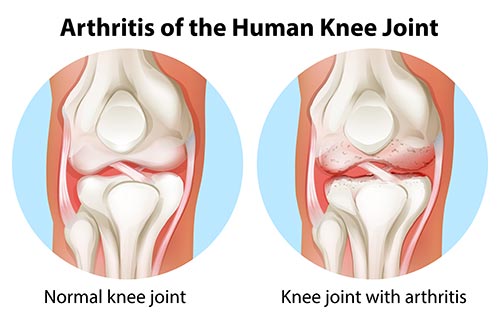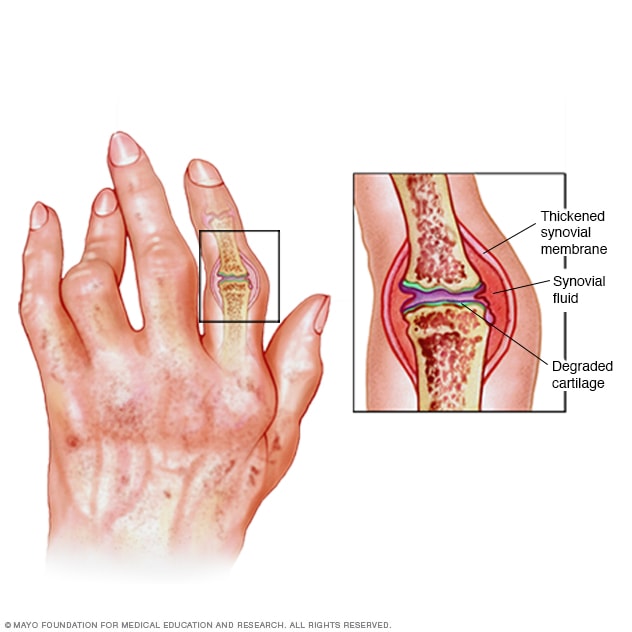Arthritis
Arthritis is a disease which affects the mobility of joints, causing painful inflammation and stiffness of the joints. The two most common forms of the disease are osteoarthritis and rheumatoid arthritis.
Osteoarthritis is a form of the disease where the cartilage between bones is worn away, causing the bones to rub against each other- very painful!

There are certain activities which can increase the risk of someone feeling the affects of osteoarthritis:

Interesting fact: The term arthritis refers to about 120 different diseases that can affect the joints, muscles and other soft tissues. The three most common forms are osteoarthritis, fibromyalgia and rheumatoid arthritis. .
Osteoarthritis is a form of the disease where the cartilage between bones is worn away, causing the bones to rub against each other- very painful!

There are certain activities which can increase the risk of someone feeling the affects of osteoarthritis:
- Continual wear and tear
- Fractures and infections
- Overuse
- Physical inactivity
- Being overweight

Interesting fact: The term arthritis refers to about 120 different diseases that can affect the joints, muscles and other soft tissues. The three most common forms are osteoarthritis, fibromyalgia and rheumatoid arthritis. .
Heart Attack
What is a heart attack?
A heart attack happens when there is a sudden complete blockage of an artery that supplies blood to an area of your heart. A heart is a muscle, and it needs a good blood supply to keep it healthy.
The causes of heart attacks and how to prevent one?
The underlying cause of a heart attack is coronary heart disease. Some people may not know they have coronary heart disease until they have a heart attack. For others, a heart attack can happen after weeks, months or years of having coronary heart disease.
Medical treatments and healthy lifestyle choices can help your heart attack recovery, greatly reduce your risk of further heart problems, and relieve or control symptoms such as angina.

Symptoms of a heart attack?
Discomfort or pain in your chest. This can often feel like a heaviness, tightness or pressure. People who have had a heart attack have commonly described it as like “an elephant sitting on my chest”, “a belt that’s been tightened around my chest” or “bad indigestion”. The discomfort may spread to different parts of your upper body. Discomfort in your arm(s), shoulder(s), neck, jaw or back is common. You may have a choking feeling in your throat. Your arms may feel heavy or useless.
DNA Extraction from a Banana
Aim:
To find a valid method online and then to successfully extract strands of DNA from a banana.
Equipment:
1/2 peeled ripe banana, 1/2 cup water, 1 tsp salt, 1/2 tsp liquid dishwashing soap, resealable zip-top bag, very cold rubbing alcohol, coffee filter, funnel, stirrer.
Method:
- Mush the banana in the resealable bag for about a minute until all the lumps are gone.
- Fill a cup with water and salt.
- Pour the saltwater mix into the bag. Close the bag and very gently squeeze and move the saltwater and banana mush together. Do this for 30 to 45 seconds.
- Add the dishwashing soap into the bag and gently mix the contents. Try to avoid making too much foam.
- Place the coffee filter in a funnel.
- Pour the mix into the filter and let it sit until all of the liquid drips down into the beaker.
- Remove and discard the used coffee filter.
- Tilt the glass and slowly add cold alcohol down the side of the cup. You want the alcohol to form a layer on top of the banana mix, staying separated, so be careful not to pour it too fast. Make a layer of alcohol that is 2.5-5cm (1-2in) thick.
- After the alcohol layer is set up, wait for eight minutes. You may see some bubbles and cloudy material moving around in the alcohol. This is the DNA pieces clumping together.
- Use the wooden stirrer to start poking the cloudy stuff in the alcohol layer. Spin the stirrer it in place to start gathering the cloudy stuff. When you are done, take a closer look at the stuff on the stirrer. You are looking at DNA!
Method source: https://askabiologist.asu.edu/activities/banana-dna
Results:
No comments:
Post a Comment
Please make your comment positive, thoughtful and helpful!